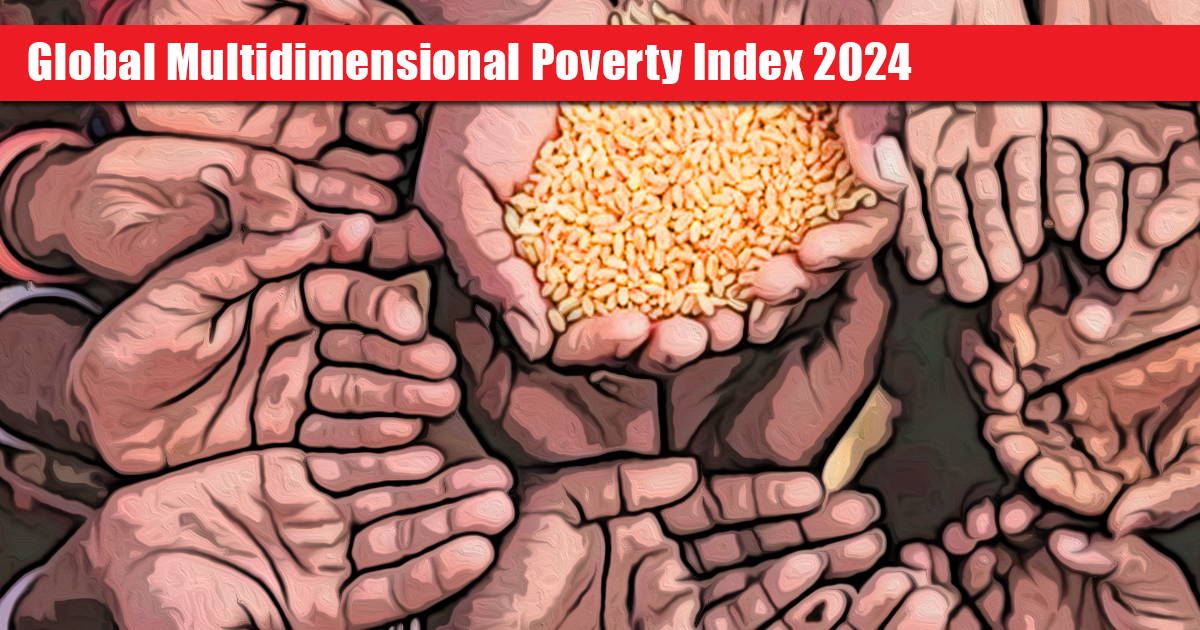
Context:
The 2024 Global MPI, themed “Poverty Amid Conflict,” is an annual report published by the UN Development Programme (UNDP) in collaboration with the Oxford Poverty and Human Development Initiative (OPHI).
- It assesses poverty using ten indicators across three key dimensions: health, education, and living standards.
- A household is classified as “multidimensionally poor” if it suffers deprivation in at least one-third of these indicators.
Key Findings:
- Across 112 countries, 18.3% of people are living in acute multidimensional poverty. Approximately 40% of the 1.1 billion people in poverty (about 455 million) are in countries affected by conflict.
- The countries with the highest number of people in poverty include India (234 million), Pakistan (93 million), Ethiopia (86 million), Nigeria (74 million), and the Democratic Republic of the Congo (66 million). Together, these five countries account for nearly 48.1% of the global multidimensionally poor population.
- 584 million children (under 18 years of age) live in extreme poverty, comprising 27.9% of all children globally, compared to 13.5% of adults. A significant majority of the poor, 83.7%, live in rural areas.
- The report highlighted that 2023 saw a record number of conflicts since WWII, leading to the displacement of over 117 million people.
Factors Contributing to India’s Poverty:
- Geographical Disparities: High rural poverty levels are primarily driven by inadequate infrastructure, poor service provision, and limited non-agricultural economic opportunities.
- Educational Challenges: Many government schools provide substandard education, resulting in poor learning outcomes and limiting opportunities for future generations.
- Sanitation and Hygiene: A lack of access to safe drinking water and insufficient sanitation facilities, particularly in rural areas, continues to push many households into multidimensional poverty.
- Malnutrition: Severe malnutrition remains a significant issue in India, particularly among children.
- Economic Setbacks: The COVID-19 pandemic severely impacted the Indian economy, leading to widespread job losses, reduced incomes, and heightened vulnerabilities for millions of households.




